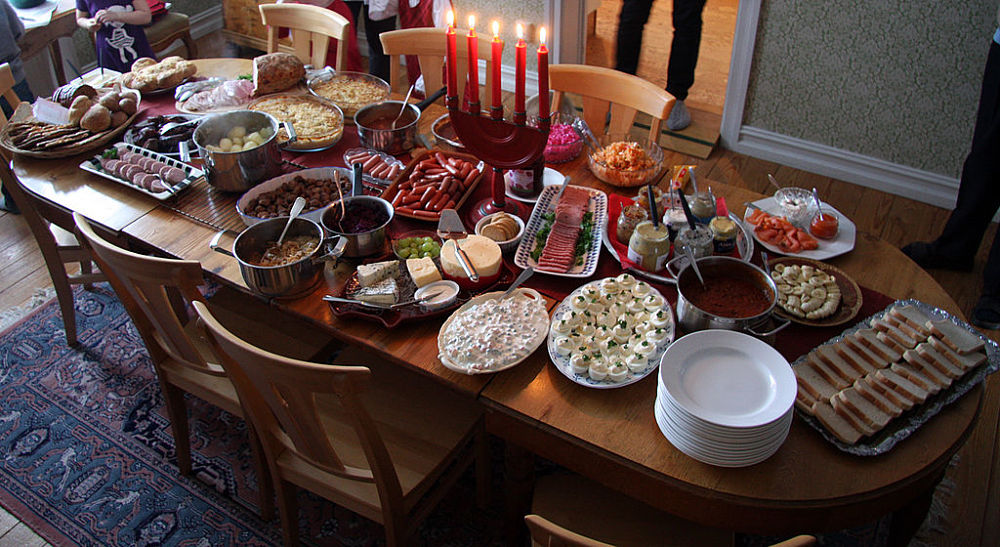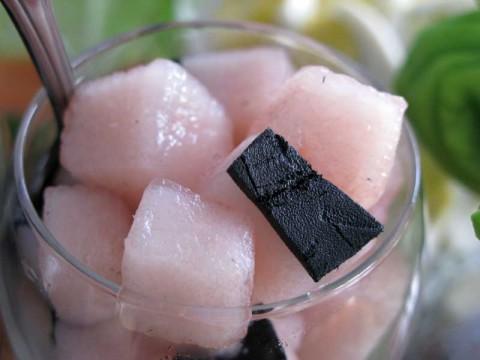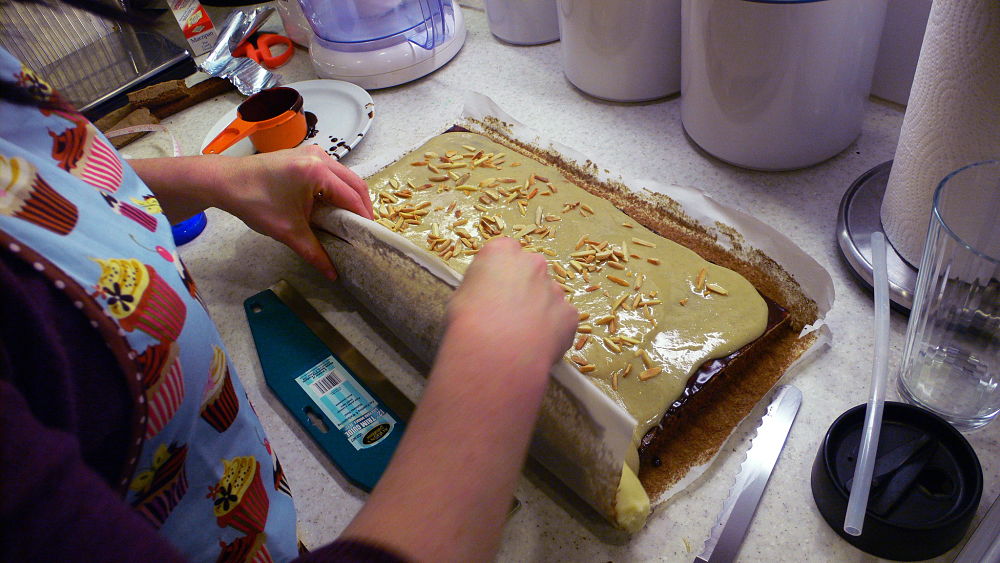What are Some Cultural Differences Around Christmas Food?
Different cultures have different food traditions, even at the Christmas table.
Are you tired with the traditional Christmas roasts, pudding and chocolates?
Looking for something a little different next Christmas?
Well, to help you we have selected a number of food traditions that might inspire you to spice things up a bit next time around!
1. In Greenland, eating habits at Christmas are… a little different than ours, to say the least.
One of the delicacies they feast on during the holidays is mattak [pictured], which consists of raw whale skin with just a little blubber still attached to it.
Another typical, traditional Greenland Christmas food is kiviak. For this dish, an auk (a small bird) is wrapped in seal skin and buried for several months. When Christmas time arrives, the bird is dug up and its flesh, which is now decomposed, is eaten. Yum!
2. Swedish holiday tradition also refrains from the traditional roasts.
During Christmas dinner, it is a Swedish custom to serve julbord, a type of buffet-style meal where different dishes are served at the same time (see pic below). However, the meal still consists of three courses.

Photo of Swedish Christmas dinner table by David Castor on Wikimedia
The first buffet consists of a variety of fish, at which pickled herring and lox (gravlax) are essential. The second course offers cold sliced meats, cheese and pickled cucumbers. A selection of warm dishes is served as a final course. During this course, people enjoy potatoes, more meat and Janssons frestelse (a type of Swedish casserole). Hard to imagine that anyone will leave the Christmas table hungry after this feast!
3. Typical Spanish Christmas celebrations consist of a lot of sweets!
In the Spanish culture, marzipan is a big part of the Christmas festivities. Spanish people also feast on turrón (below), or nougat. This delicacy is made of honey, sugar, egg white and nuts and its consistency can vary from very hard to creamy soft. It comes in a round or rectangular shape from which pieces have to be cut or broken off.

Photo of Turrón by Lablascovegmenu on Flickr (CC BY 2.0)
The Spanish have another holiday tradition in which food plays an important part; during New Year’s Eve, the Spanish pop a grape in their mouth every time the bell tolls at midnight. That’s probably an awkward happy new year kiss :)
4. In Japan, only about one per cent of the population is actually Christian.
However, this doesn’t mean the Japanese refrain from celebrating the Christian holiday of Christmas. In Japanese culture, people feast on KFC chicken during the holidays. This practice can be traced back to the early seventies of the last century when KFC started a successful advertising campaign that told people that fried chicken is essential at the Christmas table.
Photo by Michael on Flickr (CC BY 2.0)
In fact, the current demand is so high that the Christmas Party Barrels the fast food chain offers have to be ordered two months in advance! Japanese children are also very fond of Christmas cake. This cake has nothing to do with the typical Christmas cake but is a sponge cake topped with whipped cream and strawberries.
5. French Christmas celebrations also require a sponge cake, albeit in a very different shape!
Christmas meals in France are usually concluded with a Bûche de Noël, a Christmas log. This log is a reference to the Yule log, a sturdy block of wood that was burned during Christmas in for example the UK in the seventeenth century. The Bûche consists of a low, rectangular sponge cake that is iced, rolled up and iced again to resemble a log. According to a very reliable source, it is essential that the icing on the Bûche de Noël is chocolate flavoured, otherwise it’s not a real one!
Preparing the Bûche de Noël. Photo by Kelly Sue DeConnick on Flickr (CC BY-SA 2.0)
The French also munch on foie gras, duck or goose liver that has been fattened especially for this purpose.
So, any look good?
Related Posts
By accepting you will be accessing a service provided by a third-party external to https://www.commisceo-global.com/

 +44 0330 027 0207 or +1 (818) 532-6908
+44 0330 027 0207 or +1 (818) 532-6908


